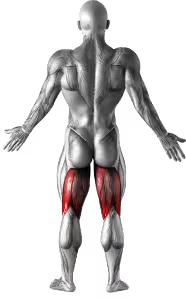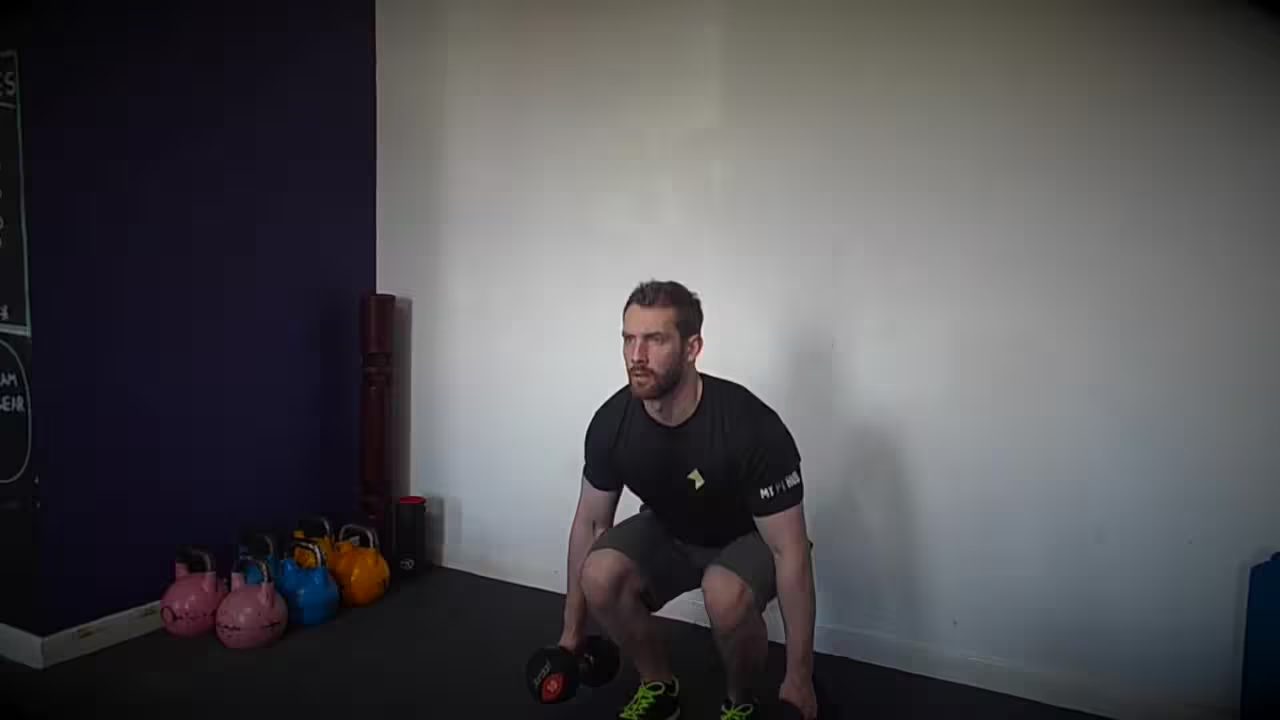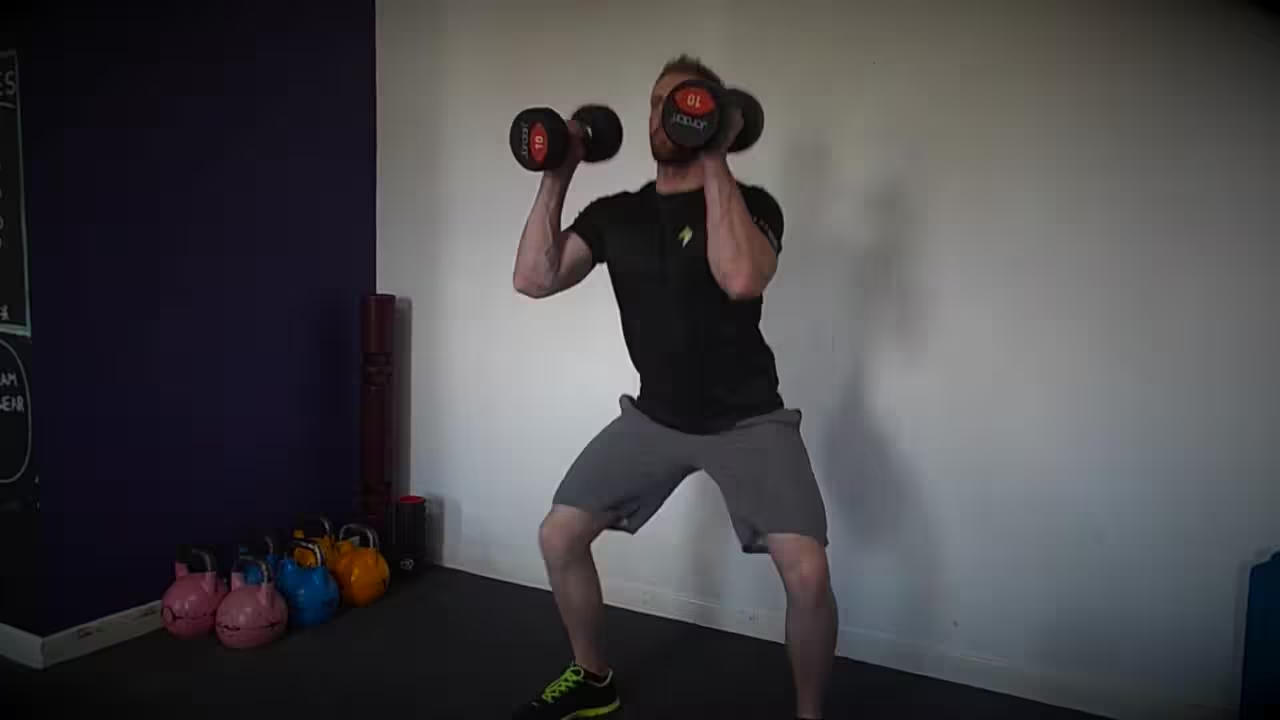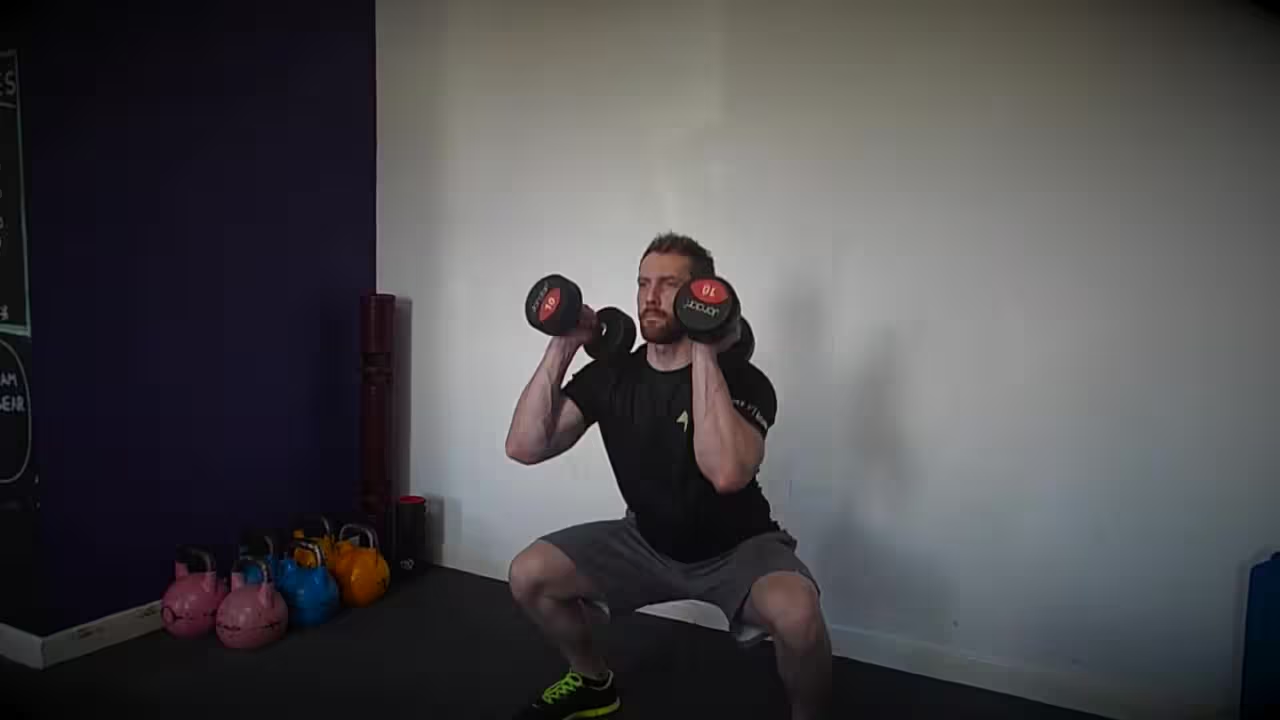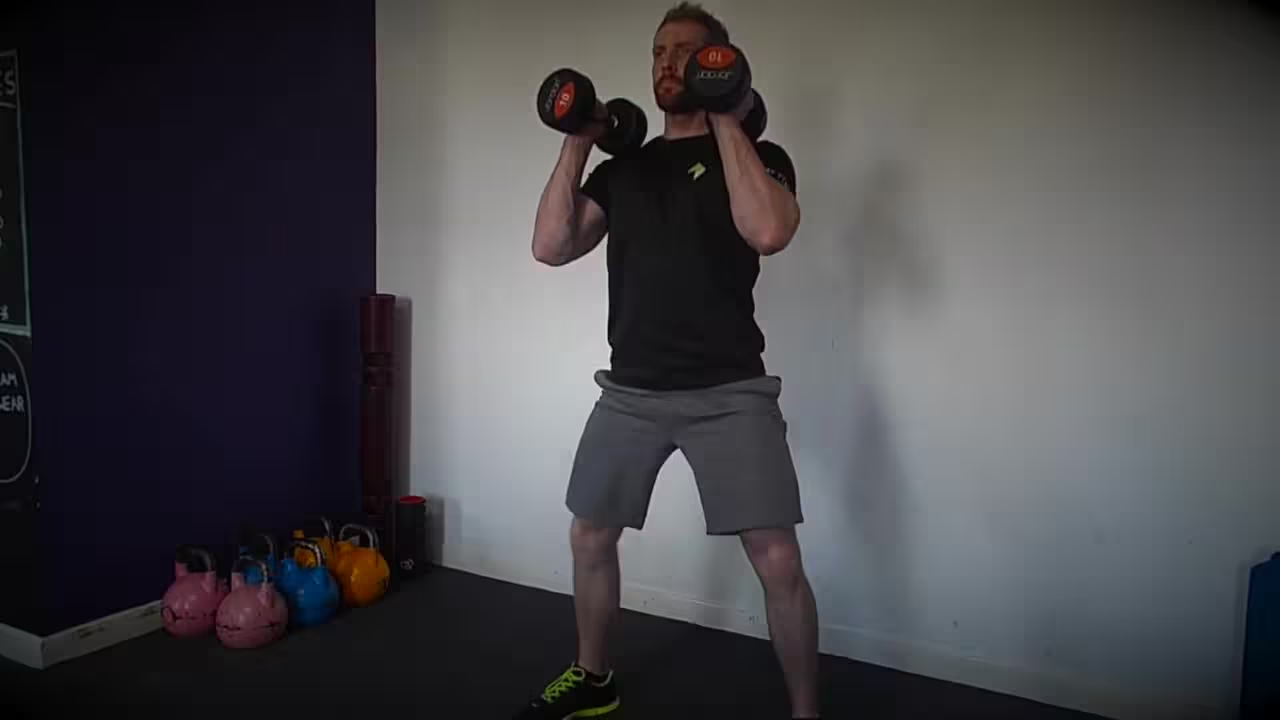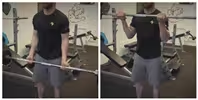The Dumbbell Clean is a versatile and dynamic exercise that targets multiple muscle groups, focusing on strength, coordination, and power. It involves lifting dumbbells from the ground to shoulder level in one fluid motion. This movement is excellent for building full-body strength, improving athletic performance, and enhancing explosive power. The Dumbbell Clean can be a great addition to any functional fitness or strength training routine.
Dumbbell Clean Video
How to Perform Dumbbell Cleans
Dumbbell Clean Images
Step-by-Step Instructions:
- Set Up Your Dumbbells: Place the dumbbells on the floor in front of you. Stand with your feet shoulder-width apart, keeping your back straight.
- Grip the Dumbbells: Bend at your hips and knees to grasp the dumbbells with a neutral grip, palms facing each other.
- Initiate the Lift: Drive through your heels and extend your hips and knees, lifting the dumbbells off the ground.
- Pull and Shrug: As the dumbbells pass your knees, explosively pull them upwards and shrug your shoulders to generate momentum.
- Catch the Dumbbells: Rotate your wrists and elbows under the dumbbells, catching them at shoulder height in a standing position.
- Return to Start: Lower the dumbbells back to the ground in a controlled manner, maintaining good form. Repeat for the desired number of reps.
Dumbbell Clean Benefits
- Full-Body Strength: The Dumbbell Clean targets the lower body, upper body, and core, making it a comprehensive strength-building exercise.
- Improved Coordination: The dynamic nature of the movement enhances motor control and coordination.
- Explosive Power: This exercise develops explosive power and speed, which are crucial for athletic performance.
- Enhanced Grip Strength: Holding and lifting the dumbbells improves grip strength and forearm endurance.
- Versatility: The Dumbbell Clean can be modified for different fitness levels and training goals.
Dumbbell Clean Muscles Worked
Targeted Muscles
The Dumbbell Clean is a full-body exercise that primarily targets the glutes, hamstrings, quadriceps, and deltoids. Secondary muscles involved include the trapezius, biceps, core, and forearm muscles, making it a well-rounded movement for overall strength and power development.
